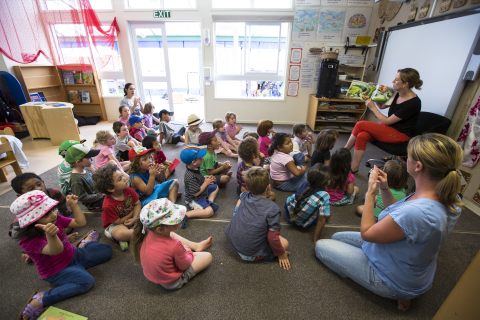As early childhood teachers, we’re often asked about the best ways to support a bilingual child. This is unsurprising, given that Auckland has over 200 different ethnic groups, and over 30% of Aucklanders are bi- and multilingual. So we see an increasing number of children who are learning more than one language at home and in early childhood education centres.
Being bilingual is a very powerful asset in our multicultural society. And in the last few years, we’ve seen a big rise in research on young children who are bilingual and what effect this has on their brains.
Researchers in Canada* noticed a positive effect on the problem-solving skills of young children who could speak more than one language. Children who switch between different languages demonstrate a greater mental flexibility in some thought exercises than children with only one language. It seems that thinking in two different languages helps children when it comes to switching their focus and attention from one thing to another.
That’s why we encourage people to share their languages with their children. We tell people that the key is to speak the language you are most fluent in and comfortable with. This sets your child up with strong language foundations. If you are not comfortable speaking a language (perhaps it’s a second or third langauage) then it’s okay to wait until you are. Letting your child learn the basics of English from native speakers, and their home language from you, gives them the best start in their bilingual journey. As their skills develop, it is not unusual for them to mix grammar and vocabulary from both languages. But over time they learn the systems of each language, and when to use them.
So what might an early childhood education centre do for your bilingual child? You probably want to find one that supports your child’s home language. Many teachers offer to learn and use different words and phrases so they can share them with all the children in their care. They may also share your home culture and language by celebrating it with songs, pictures, cultural celebrations and so on. This helps your child to feel they belong, and creates a positive learning place.
When your child starts at kindergarten or an early childhood education centre, it’s not unusual for them to go through a ‘silent period’ while they navigate their way around the new environment. This can last a few days or a few months. This is especially true for children who come from a home where English isn’t spoken, and then move into an English-speaking education centre. But don’t worry. Some children make a slower start when learning a second language, but once they are surrounded by that language, they soon catch up with their friends. Children are wonderfully adaptable and flexible, and having the opportunity to learn more than one language is a real advantage.
It’s always worth talking to your child’s teachers about their language development if you have any concerns at all. There are also speech language therapists available if you think you need some extra support for your child.
*Further reading:

